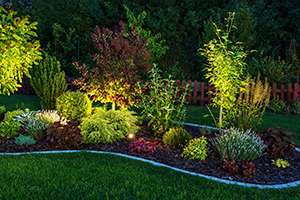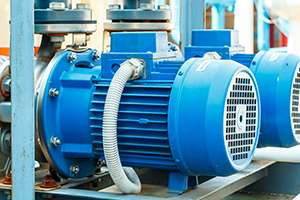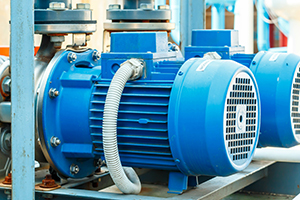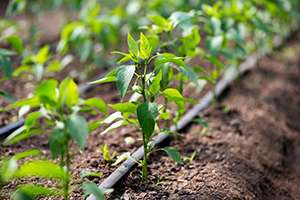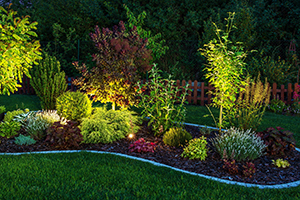
The right landscape lighting adds that extra special something to your backyard living space. If you are ready to bring more enjoyment and comfort to your outdoor area, illuminating the backyard is a great place to begin. Determining the proper landscape lighting can be a challenge for many homeowners. If you are ready to light up your backyard but aren’t sure how to start, take a look at these tips for choosing landscape lighting to achieve beautiful results:
#1: Decide What You Want to Highlight
One of the first things to consider as you choose your landscape lighting is what you want to illuminate. Do you have a specific area of your landscaping, fountains, walkways, or other features you would like to highlight? Choosing which features to bring in focus will help you know which type of lighting fixtures to select.
For example, ground lighting or path lights will be ideal if you want to highlight a walkway, whereas spotlights are ideal if you wish to illuminate trees or other features in your backyard.
#2: Choose Flood Lights, Spotlights, Path Lights or a Combination
Now that you know what to highlight, you can begin choosing your lighting style. If your budget allows, you can add a combination of floodlights, spotlights, and path lights. Or, if you are trying to keep things budget-friendly, begin with what you want to illuminate first and add in different types of lighting over time.
#3: Know the Differences Between Light Bulbs
The three primary light bulb choices for exterior lighting include:
- LED
- Halogen
- Fluorescent
LED lighting will be a longer-lasting bulb that helps you conserve energy, while a halogen bulb will give you a high-intensity, white, bright light. Fluorescent lighting will be your most affordable option upfront, but the bulbs contain mercury, so they are a health risk if broken.
Do you need more help choosing landscape lighting for your backyard? Contact the landscape lighting experts at WP Law, Inc. to get personalized service and professional advice!


